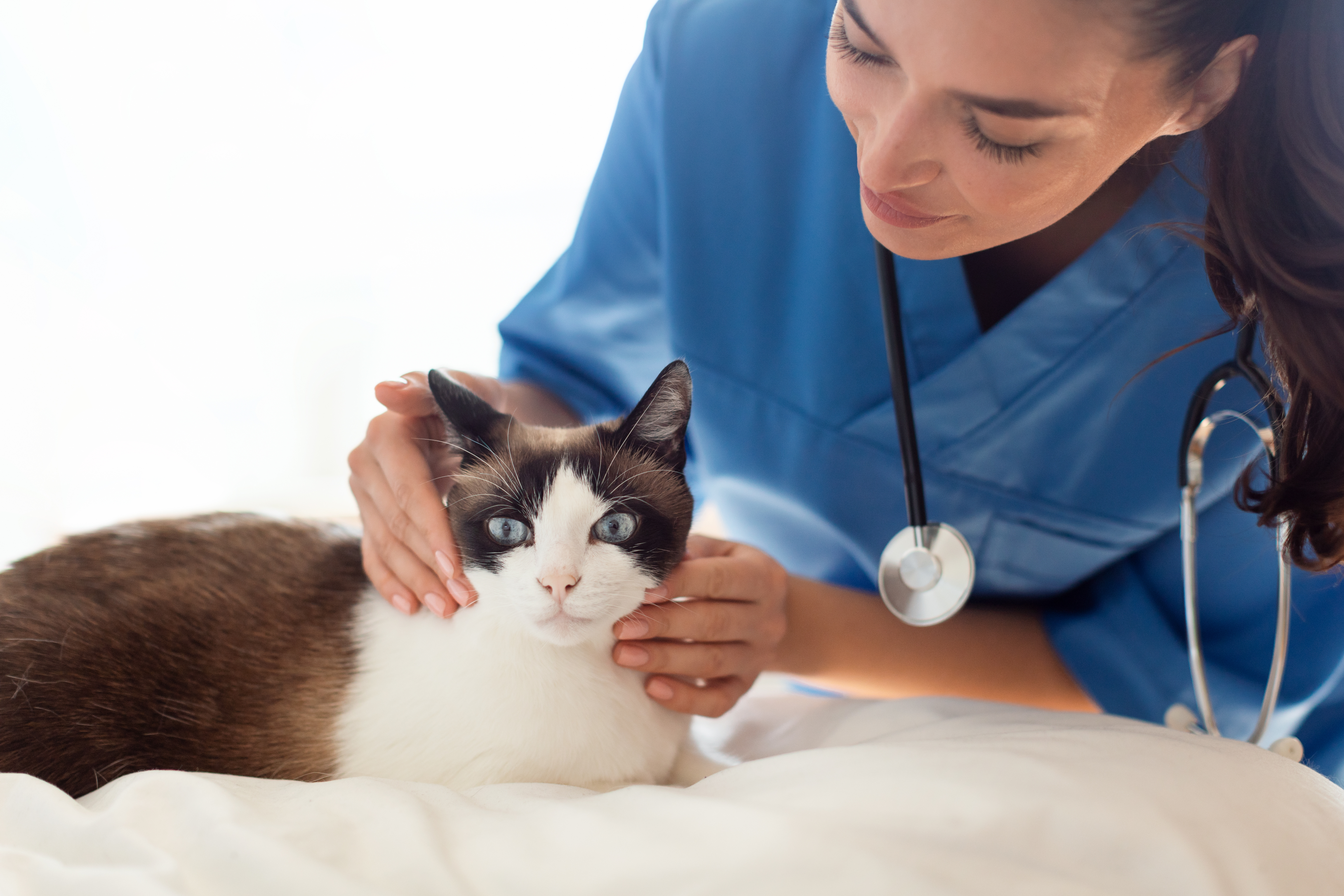Key Takeaways
- Aortic Thromboembolism (ATE) is when a blood clot blocks an artery in cats, often affecting their back legs
- It's mainly caused by heart issues and certain conditions that make blood clot easily
- Signs of ATE are sudden pain, back leg paralysis, cold limbs, and breathing problems
- Vets diagnose it through exams, pictures of the inside of the cat, and blood tests
- Treatment helps stabilize the cat, eases pain, and targets the blood clot with medicines or sometimes surgery

Aortic Thromboembolism is a sobering reminder of the complex web of feline health. This condition, which often appears silently until it reaches its more severe stages, refers to a blockage in the main artery or one of its branches caused by a lodged blood clot. Understanding the complexities of aortic thromboembolism is critical for every cat owner and veterinarian.
Investigating this condition further reveals not only the importance of early detection, but also the broader spectrum of feline health and wellness. Understanding such ailments underscores our commitment to their well-being as we travel through the world of cats, emphasizing the importance of regular veterinary check-ups, informed care, pet insurance, and a proactive approach to their health.

Anatomy & Physiology
Delving into the intricacies of feline anatomy, one cannot overlook the vital role of the aorta—the heart's primary conduit and the largest artery, responsible for channeling life-giving blood throughout a cat's body. This majestic vessel springs from the heart, coursing with vigor to distribute oxygen-rich blood to every nook and cranny of the feline form.
Within the elegant framework of the cat's circulatory system, blood flows seamlessly through a network of arteries, capillaries, and veins, ensuring that each organ, muscle, and tissue is nourished and rejuvenated. As the lifeblood ebbs and flows, it's a testament to nature's design and the delicate balance of circulation in our feline companions. Understanding the aorta's central function and the broader circulatory dance is crucial, painting a vivid picture of the cat's inner workings and reinforcing our appreciation for their physiological marvels.
What is Aortic Thromboembolism?
At its core, Aortic Thromboembolism (ATE) is the sudden obstruction of blood flow due to a blood clot, or thrombus, that has lodged in the aorta or its branches. While thromboembolic events can occur in various parts of the body, ATE is particularly concerning due to its location in the main arterial system. Unlike other thromboembolic events that might affect smaller, peripheral vessels, ATE has the potential to halt blood flow to major portions of the cat's body, especially the hind limbs.
Causes & Risk Factors
When navigating the complexities of Aortic Thromboembolism in our feline companions, one must cast a discerning eye towards its root causes and risk factors. At the heart of this condition, quite literally, are various heart diseases. These ailments, often lurking beneath the surface, can pave the way for dangerous clot formations, turning the very lifeblood of our cats into a potential peril.
Beyond cardiac complications, another shadowy player enters the scene: hypercoagulable states. In these instances, a cat's blood exhibits an unnaturally high propensity to clot, elevating the risk of blockages in major arteries. But the list doesn't end there. A mosaic of other underlying health issues, ranging from specific systemic diseases to some forms of cancer, further compound the risk profile. As dedicated guardians of feline health, understanding these causes and risk factors empowers us to anticipate, intervene, and advocate for the well-being of our cherished four-legged friends.
Affected Breeds
While this condition can be an unwelcome visitor to any cat, certain breeds bear a heightened susceptibility. The Maine Coon, with its majestic mane and imposing presence, is one such breed that has shown a predisposition to cardiac ailments leading to thromboembolism. Similarly, the Ragdoll, with its placid demeanor and striking blue eyes, has also been identified with an elevated risk.
While the exact reasons remain a complex interplay of genetics and environmental factors, breed-specific predispositions underscore the importance of targeted health surveillance. Knowledge of such breed vulnerabilities is not a cause for alarm, but rather a call to action. It beckons breeders, veterinarians, and cat enthusiasts to collaborate, ensuring that every whisker, every purr, and every feline leap is backed by the robust heart health of our cherished breeds.
Clinical Signs & Symptoms
Navigating the nuanced realm of feline health, one encounters the unmistakable distress signals of Aortic Thromboembolism. It's a condition that doesn't whisper; it screams. The most jarring sign is the sudden onset of acute pain, a stark deviation from a cat's usual grace and poise. This pain often manifests in tandem with a disheartening sight: the paralysis of the hind limbs, rendering these agile creatures immobile.
As if these signs weren't distressing enough, a palpable coldness in the limbs emerges, a chilling testament to the halted blood flow. Owners might also detect heightened vocalization or distress—a cat's poignant cry for relief. In severe manifestations, even the simple act of breathing becomes labored, revealing the depth of the condition's impact. Recognizing these signs is more than clinical observation; it's an urgent call to action, a plea to restore the vibrancy and vitality of our feline companions.
Diagnosis
In the meticulous journey to demystify Aortic Thromboembolism, a thorough and systematic approach to diagnosis stands paramount. The first port of call is the hands of a seasoned veterinarian, conducting a comprehensive clinical examination. This tactile exploration seeks telltale signs, from the absence of pulses in affected limbs to the distinctive coldness signaling compromised circulation. Yet, the quest for clarity doesn't stop there.
Employing the marvels of modern veterinary medicine, diagnostic imaging—be it the sharp precision of X-rays or the detailed insights of ultrasounds—offers a visual gateway into the cat's internal landscape. These images, akin to silent narrators, tell tales of blockages, blood flow, and the condition's extent. To further cement the diagnosis, blood tests step into the fray. By analyzing a cat's blood, veterinarians gain invaluable insights into overall health and any underlying conditions that might have set the stage for thromboembolism. Together, these diagnostic tools weave a tapestry of understanding, guiding the path to targeted interventions and, ultimately, feline wellness.
Treatment
As the specter of Aortic Thromboembolism looms over a feline patient, the response from the veterinary community is swift and decisive. Treatment is not a singular path but a multifaceted approach, tailored to the unique needs of each cat. The initial focus rests on immediate stabilization, creating a foundation of stability from which all subsequent interventions arise. In tandem, the profound discomfort and distress of the condition necessitate dedicated pain management, ensuring our feline companions find relief from their anguish.
Venturing deeper into the treatment arsenal, thrombolytic therapy emerges as a beacon of hope, wielding medications that target and dissolve the perilous clots. For some, the journey might necessitate a surgical detour, addressing blockages that defy less invasive measures. Beyond these immediate interventions, the horizon of care extends into the realm of long-term management and medications. These ongoing strategies, whether they involve blood thinners or heart medications, are the guardians of future well-being, warding off recurrence and championing the enduring health of our cherished cats.
Prognosis
Facing the formidable challenge of Aortic Thromboembolism in our feline friends, the question of prognosis emerges, draped in both hope and uncertainty. The outlook, as with many medical odysseys, isn't painted with a broad brush but is delicately shaped by a myriad of factors. The location of the clot, the swiftness of intervention, and any underlying health conditions play pivotal roles in shaping the road ahead.
While the journey is unique for each cat, data-driven insights illuminate potential outcomes and survival rates, offering both cautionary tales and stories of resilience. Yet, beyond the clinical metrics and survival statistics, lies a dimension of care that's profoundly personal: quality of life considerations. In the delicate dance of treatment and recovery, the well-being, comfort, and dignity of our feline companions stand at the forefront. The goal isn't merely survival but ensuring that each purr, each playful pounce, and each moment of contentment is lived to its fullest.
Prevention
The old saying that "prevention is better than cure" resonates with profound clarity, especially when confronting the specter of Aortic Thromboembolism. As custodians of our feline companions' well-being, the onus of preemptive care falls squarely upon our shoulders.
Foremost, it's essential to keep a vigilant eye on those cats presenting with risk factors — be it a genetic predisposition or an underlying heart condition. This vigilance translates to regular veterinary check-ups, where professional insights can detect the faintest whispers of impending health issues long before they roar into major concerns.
Furthermore, in the arsenal of preventive measures, medications and interventions stand as sentinels. Whether it's a regimen of blood thinners or specific interventions tailored to a cat's unique health profile, these proactive measures act as a bulwark, minimizing the risk of clot formation and ensuring our feline friends tread the path of health with grace and vitality.
Owner Education & Support
Navigating the intricate pathways of feline health, a cat owner's role is both a privilege and a profound responsibility. Central to this journey is education and support. Recognizing that knowledge is power, it's imperative for owners to be adept at recognizing early signs of ailments like Aortic Thromboembolism. This keen awareness, honed through guidance from veterinary professionals, can be the crucial difference between timely intervention and missed opportunities.
But awareness is just the beginning. Owners must also be equipped with a blueprint for emergency care, understanding the immediate steps to undertake should they face a health crisis with their feline companion. Yet, beyond the medical realm, the journey is also punctuated with emotional and financial considerations. The weight of a diagnosis, the anxiety of treatment decisions, and the potential strain on one's finances require a supportive ecosystem. This includes support groups, counseling, and financial assistance programs, all designed to ensure that every cat owner is empowered, supported, and never alone in their quest for their pet's well-being.

Conclusion
Understanding Aortic Thromboembolism provides invaluable insights into feline health. Catching and addressing this condition in its early stages can dramatically alter its trajectory, offering hope.
The result of tireless research and unwavering dedication promise not only treatments but also improved quality of life for our feline companions. In this changing environment, our dedication to their well-being, backed by cutting-edge science and compassionate care, ensures that our cherished cats live lives full of vitality, joy, and the promise of better tomorrows.




























